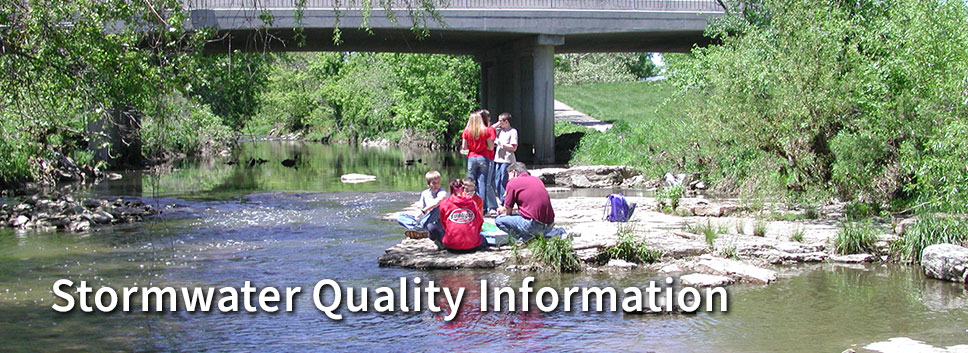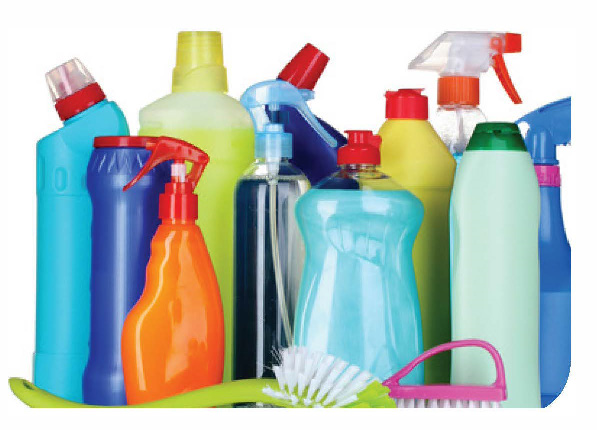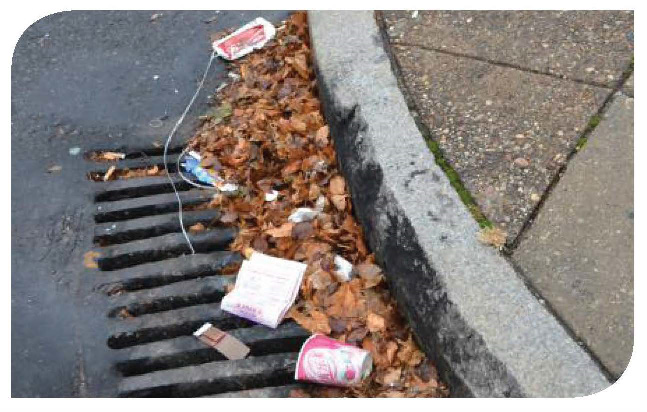Stormwater Quality & Information

What is stormwater runoff?
When water falls to the earth as rain, snow, or ice, most of it seeps into the ground. If the ground is frozen or saturated with water, the excess water flows over land, creating stormwater runoff. Also, rain and melted snow and ice on hard surfaces, so roads, buildings, parking lots, and sidewalks have nowhere to go except flow downhill to a street, storm drain, or nearby creek.
Why is stormwater runoff a concern?
Stormwater runoff is directed into storm drains that flow directly into local streams, rivers, and lakes, carrying pollutants from the ground and hard surfaces. These pollutants include oil and grease, fertilizers, pesticides, pet waste, trash, and soil. The pollutants degrade the water quality and are harmful to wildlife.
What is stormwater runoff management?
Different tools and methods increase the precipitation that soaks into the ground or is captured and released slowly into nearby streams, rivers, and lakes.
Only Rain Down the Drain:
Stormwater Pollutants
Household Chemicals

- Cleaning solutions should not be dumped on the grass, parking lot, or storm drain. Follow instructions on how to dispose of chemicals properly.
- Clean up any chemical or hazardous material spills before they can wash down our inlets.
MARC Water Quality – Household Chemicals
Litter & Trash

- Litter and trash in our streets and yards can end up in our streams and rivers.
- Put all trash and litter in a wastebasket or trash bag.
- Do not dump trash or trash bags into storm inlets, rivers, and streams.
MARC Water Quality – Litter
Pet & Yard Waste

Pet Waste
- Pick up after your dog and throw waste into trash.
- Pet waste left on yards, streets, and sidewalks can be carried to the stream during a storm event. Pet waste contains bacteria and pollutes our water.

Yard Waste
- Do not put leaves or grass clippings down the storm sewer inlet.
- Use lawn bags, compost, or mulch leaves and grass.
- Do not over-apply pesticides, herbicides, and fertilizers. Excess chemicals will runoff and end up in the stream. Less is best when it comes to yard chemical application.
MARC Water Quality – Yard Waste
Swimming Pools
Avoid polluting local water sources and keep the environment safe by draining your pool correctly:
- Swimming pools can only be discharged overground, or if permitted, to the sanitary sewer system after stopping chlorination for a minimum of 72 hours, and the pH level is between 7-8.
- Discharge water slowly across lawns, assuring the discharge water does not negatively impact neighboring properties.
All pool backwash is prohibited by Municipal Code Section 30-123(b) to be discharged overground. Pool backwash must drain to the sanitary sewer system.
To learn more about how to drain your swimming pool responsibly, view the Kansas Department of Health and Environment's Recommended Procedures for Draining Swimming Pools(PDF, 18KB)
Residential Solutions
Lawn Care & Chemicals

- Do not put leaves or grass clippings down the storm sewer inlet.
- Mow grass at the highest setting and leave grass clippings in place.
- Only water necessary - Water in the morning to avoid evaporation.
- Do not over-apply pesticides, herbicides, and fertilizers. Excess chemicals will runoff and end up in the stream. Less is best when it comes to yard chemical application.
- MARC Lawn Chemicals flyer(PDF, 273KB)
Rain Gardens

- Designed to collect rainwater in low-lying areas.
- Native plants and flowers help infiltrate water and reduce stormwater runoff.
- Little to no irrigation is needed - Low maintenance!
- Attract butterflies and birds - colorful flowers and green plants are attractive to your yard!
- How to Build Your Own Raingarden
- For more information, visit cleanwaterkcmetro.org.
Urban Watershed